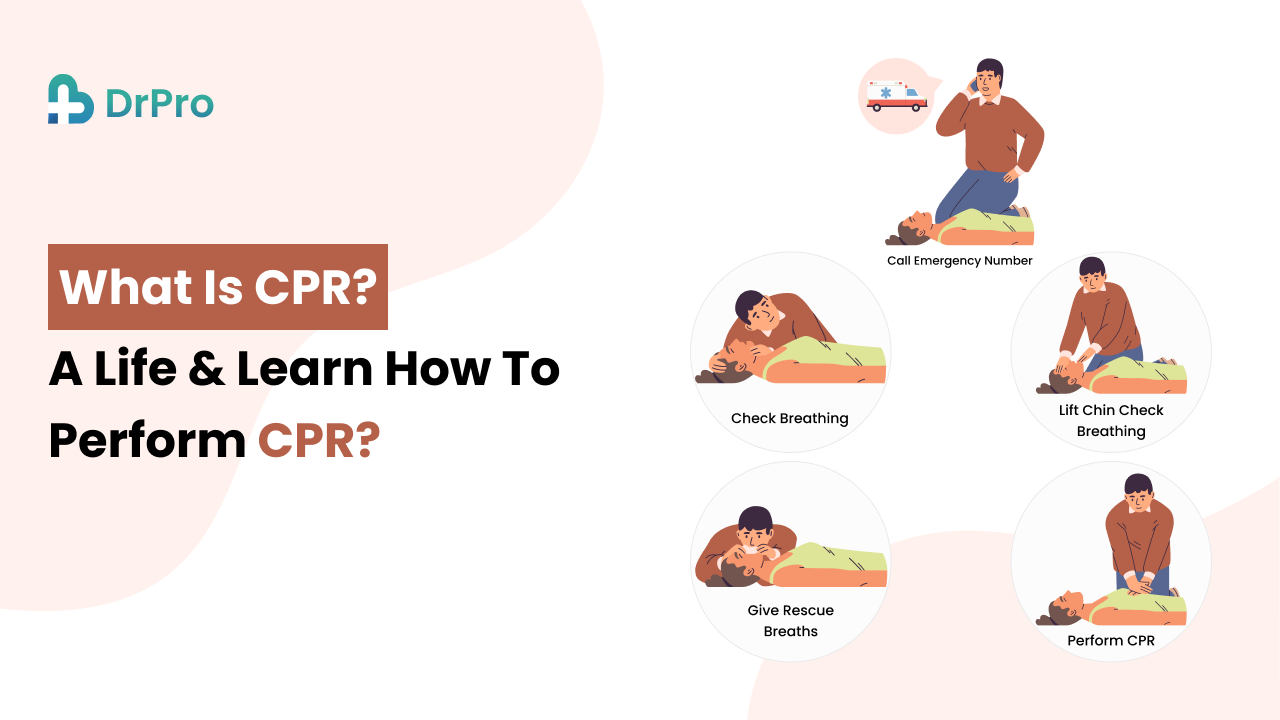Cardiac arrest can occur anytime, anywhere, and at any age. It is a life-and-death scenario in which a heartbeat shall be restored immediately to save the life. This is where CPR (Cardiopulmonary Resuscitation) becomes paramount. It is a temporary means through which blood and oxygen continue to perfuse until emergency care arrives. Understanding CPR training and lifesaving techniques can help anyone act quickly and save a life in an emergency. This article explains what CPR is, how it works, and why everyone should know how to do CPR.
What is CPR?
Cardiopulmonary Resuscitation. The emergency procedure is used when a person’s heart does not beat.
- Keeps blood and oxygen flowing to vital organs.
- It utilizes chest compressions and breathing attempts.
- In cases of cardiac arrest, drowning, choking, or extensive injury.
CPR can buy time before medical help arrives.
learn more about: Joining the Cause: Importance of Blood Donation
The Importance of Time in Cardiac Emergencies
When cardiac arrest happens, every second counts.
- 4-6 minutes: have passed since the brain started dying without oxygen.
- after 10 minutes: Survival chances are then almost nonexistent.
- With early CPR, immediate defibrillation can double or triple your chances of surviving.
CPR training and lifesaving techniques equip people with the knowledge to act fast. The sooner CPR is started, the better the chances of survival.
How CPR Works
CPR involves two main steps:
1. Chest Compressions
- Push hard and fast in the center of the chest.
- At a compression rate of 100-120 compressions per minute.
- Allow complete elevation of the chest between compressions.
2. Rescue Breaths (Optional for Trained Individuals)
- Tilt the head back to open the airway.
- Give two breaths for every 30 compressions.
- Continue till help arrives.
Hands-only CPR (just chest compressions) is recommended for untrained bystanders. It is an essential part of CPR training and lifesaving techniques.
The Lifesaving Impact of CPR
Performing CPR could increase the chances of survival dramatically.
- Without CPR, the chances of survival are minimal.
- With CPR, two to threefold increases the chances.
- Early CPR and quick, effective defibrillation could save several thousand people each year.
Learning CPR training and lifesaving techniques ensures more people are prepared to step in when needed.
more updates for: Understanding Low Blood Pressure: Symptoms & Treatments
The Role of Bystanders in Cardiac Arrest
Most cardiac arrests do happen–without exception–outside the hospital, in one’s home, at work, or in public places. That’s when the bystanders come in to make the difference.
- Most people will not do anything because they don’t have training or they’re afraid they will do it wrong.
- Hands-only CPR is easy to do because there’s no mouth-to-mouth breathing involved.
- Time and confidence can make a difference.
By understanding the importance of CPR training and lifesaving techniques, bystanders can act confidently in emergencies.
CPR Training and Accessibility
CPR training could be a requirement for almost all individuals, such as:
- Healthcare professionals: doctors, nurses, paramedics
- Teachers, coaches, and employees at the workplace
- General public–as parents and students
Some of the organizations offering training include:
- The American Heart Association (AHA)
- The Red Cross
- Local hospitals and community centers
Learning CPR training and lifesaving techniques helps individuals feel prepared and confident to respond in an emergency.
Final Thought
It is simple yet powerful because it can change lives in cases of cardiopulmonary emergencies. The how and when to perform CPR might mean life and death. CPR training and lifesaving techniques are easy to learn and should be a skill everyone knows.
Everybody should learn CPR because you never know when you might have to use it. Your immediate action can save a life, whether at home, work, or in public.
Frequently Asked Questions
Q1. Why is CPR done?
CPR is done in an emergency, such as cardiac arrest, drowning, or choking, to keep vital organs supplied with oxygen.
Q2. Can anyone do CPR?
Yes. Anyone can perform CPR. Even if you don’t have formal instruction, hands-on CPR could still save a life.
Q3. What speed should I perform chest compressions?
Compress in your chest by a beat of 100 to 120 per minute, about the same beat as the song, “Stayin’ Alive.”
Q4. Should I give rescue breaths?
It helps, but if untrained people, hands-on CPR (chest compressions only) is also effective.
Q5. Where can I learn CPR training and lifesaving techniques?
CPR training and lifesaving techniques is learned through the American Heart Association, Red Cross, hospitals, and community programs.
Learning CPR training and lifesaving techniques can help save lives. Consider getting trained today.

